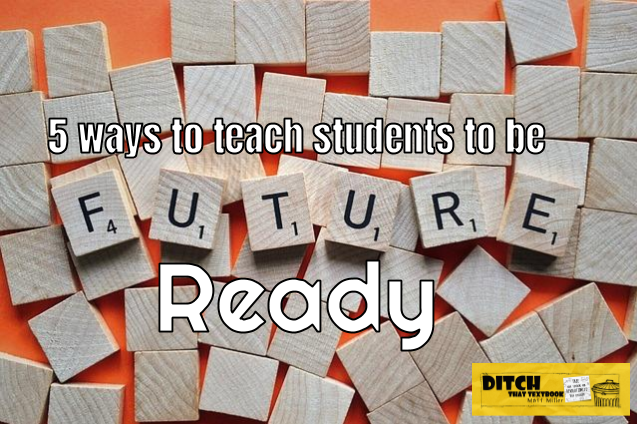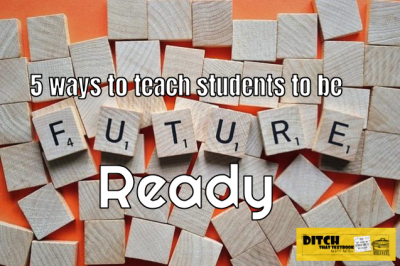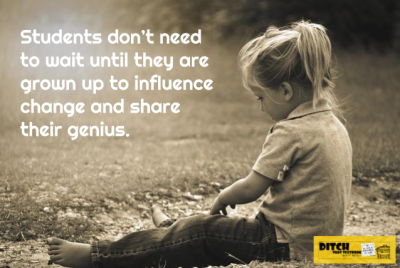
Today’s students face a technology-infused, innovation-filled world in their future.

The world is changing quickly and the future is hard to predict. These skills will likely serve students well to prepare for it. (Public domain image via Pixabay.com)
We’re already looking at the possibility of widespread smart houses, autonomous cars and artificial intelligence that can talk to us and work on our behalf. Our parents’ and grandparents’ curriculum won’t be sufficient.
How do teachers identify the trends, predict what students will need and prepare them for it — all while the target is continually moving?
Thankfully, we teachers have some guidance. Many future-ready teachers, librarians, tech specialists and others share their successes and ideas freely on social media every day.
Also, the Education Department’s Office of Educational Technology has published a plan on “Future Ready Learning,” which highlights practices that can help students, teachers and schools thrive.
Here are five things you can do today:
Ideas — and the execution of them — are king. Increasingly, information is available for free through the internet. Intellectual capital is often just as valuable a commodity as physical products. Going forward in this realm, students will be able to cash in on creativity as a currency. That can take the form of solving a problem with a novel approach or creating images that capture attention and spread ideas. For students to adeptly wield creativity, they need opportunities to practice it.
Implement this in class by having students propose solutions to messy problems that don’t have a clear-cut answer. Let students communicate their ideas through a variety of mediums (writing, video, physical models, drawing, etc.). Encourage students to try to really capture the attention of their audience with their work.
There’s a reason the phrase “better together” spreads across the education community and beyond. Rarely are we forced to work in isolation to solve problems or get our work done. Want to hear experiences from several people? Post on Facebook and crowdsource it, letting your friends and family share ideas. As our work world moves toward the future, we’re going to increasingly rely on others to get things done.
Have students solve problems in groups, then help them reflect on their collaborative process and how it can be improved. Let students share what they’re learning through a class social media account and show them how to effectively and safely interact with the world on the web.
Don Wettrick’s StartEdUp podcast is a must-listen for future-ready educators everywhere. He interviews entrepreneurs and innovators from all walks of life about how we can best prepare ourselves and students for the future.
Don’s motto is “Opportunities are everywhere.” It’s so true. An article on the internet, a conversation with a colleague, a revelation while in the checkout line at the grocery store can all spark a new idea that can make big changes. Students who learn to find opportunities everywhere can find success waiting for them anywhere.
Encourage students to pull their passions or curiosities into classroom lessons and discussions. If one student is interested, there’s a good chance others are too. Give students some freedom to pursue topics within your area of study that pique their interest. Find ways to incorporate students’ ideas into your academic work instead of saying they’re “not part of the lesson plan.”
 The internet is a vast expanse of resources, articles, videos, images, multimedia, discussions and more. It’s easy to be a consumer (especially while binging on YouTube and Netflix). But if everyone consumed and no one created, the internet wouldn’t exist.
The internet is a vast expanse of resources, articles, videos, images, multimedia, discussions and more. It’s easy to be a consumer (especially while binging on YouTube and Netflix). But if everyone consumed and no one created, the internet wouldn’t exist.
The demand for creation isn’t going away anytime soon, whether that’s digital content or physical content. Students who are willing to be creators will be at a huge advantage. Plus, when students make something, they’re more likely to remember what they learned than if they’re consuming content by watching videos or filling out worksheets.
Let students help you identify ways to demonstrate learning via creation. Let students choose how they create to best match their unique skills and talents, and occasionally encourage them to stretch themselves to different mediums.
When they’ve created something, help them to share their genius with the school community or the world by displaying it, posting photos or sharing a blog post about it.
We no longer need a magazine publisher or a TV show to get a message to an audience. Educators can start a blog or a YouTube channel and reate valuable content that connects with people or helps them to solve their problems.
This powerful process works for students and adults alike. It’s effective locally and globally. Students don’t need to wait until they are grown up to influence change and share their genius. They’ll realize they have the power to make the change they want to see in the world.
When students have influential ideas that can help others, don’t keep it quiet. Instead, help them find ways to share those ideas. Ask students to think about the change they want to make in the world, and constantly find ways to encourage them through their classwork.
[reminder]What do you think will help prepare students for the future?[/reminder]For notifications of new Ditch That Textbook content and helpful links:
Interested in having Matt present at your event or school? Contact him by e-mail!
Matt is scheduled to present at the following upcoming events:
[getnoticed-event-table scope=”upcoming” max=”15″ expanding=”false”]
Session expired
Please log in again. The login page will open in a new tab. After logging in you can close it and return to this page.